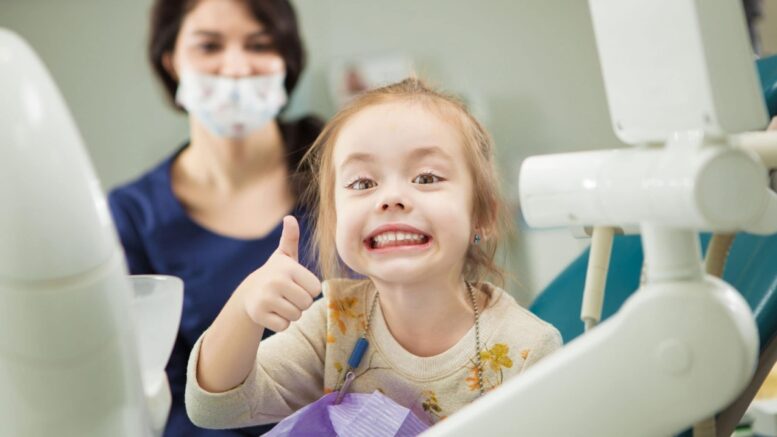Dental fear is common among children and adolescents of all ages and it is an aspect that has been monitored and analyzed for over 50 years by experts and specialists to identify changes in attitudes. This fear can have a negative impact not only on the actual treatment experience, but it can lead to avoidance to accessing care which long-term, results in poor oral health, increased tooth pain, dental infections, tooth decay and other complications. It is not uncommon for some dental practitioners to recommend sedation or general anesthesia in cases where fear and anxiety are high.
Yet, this alone does nothing to improve the long-term goal of helping children and teenagers feel more comfortable and at ease when going to the dentist. Even more so, we have heard from adult patients, now parents accompanying their children to the dentist, sharing their own stories of being terrified of accessing dental services well into adulthood as a result of their childhood experiences and often, putting off seeking care because of this.
Dentistry sedation is surely effective and can play an important role in creating a better treatment experience, but it alone cannot address the fear and anxiety that persists once the effects have run their course.
Firstly, it is key to understand and establish the need for and benefits of sedation on a case-by-case basis. It should not be used as a blanket solution for every patient, and it shouldn’t be a go-to approach. For example, in cases where toddlers and children require extensive work and multiple visits, sedation is recommended to help minimize pain and discomfort. For neurodiverse children and teenagers, or those living with co-morbidities that may interfere with the treatment, sedation is an effective option to lessen anxiety and stress, and to avoid any incidents. Patient-centric dental care involves assessing all the different elements and circumstances of each case and providing a treatment recommendation that suits their respective needs.
Secondly, it is of critical importance for parents to be fully informed of the different options available when it comes to sedation. At Desert Kids Dental, for instance, there are three methods a dentist will choose from – nitrous oxide also known as laughing gas, conscious or partial sedation, or general anesthesia. Each method comes with its own mode of administration, applications and guidance on pre- and post-sedation for specific scenarios which need to be taken into account.
Moreover, it is important for parents to be aware of the guideline updates carried out in 2019 by the American Academy of Pediatric Dentistry and the American Academy of Pediatrics when it comes to dentistry sedation in children patients. Dental practitioners are now required to have a minimum of two healthcare professionals, such as an anesthesiologist or registered nurse, specializing in life support present whilst the procedure takes place. While the cases where such an intervention is needed have been rare, a consensus has been reached among the expert dental community in terms of safeguarding and being prepared for any situation. Important to note, as there have been instances where concerns on behalf of parents have been heightened, is that this guideline update should be perceived as preventative instead of an indicator of a high risk. As the old saying goes, it is always better to be safe than sorry in the unfortunate, infrequent event that something does happen.

Whilst all of these aspects are critical to know and understand, at Desert Kids Dental, we believe there is more to be taken into account. We must recognize that simply sedating a pediatric patient with high levels of anxiety and fear will not address the root cause of the issue in the long-term and, in some cases, it may even worsen it. Fostering an environment where the worries and concerns of children are listened to and taken into account should be a priority for all dental clinics providing such services. An integrated, comprehensive approach that looks at the patient as a whole, rather than a sum of symptoms or a diagnosis, can be deployed to facilitate safety and comfort, and improve the overall treatment experience.
This can involve a number of things. For example, having a kid-friendly, soothing office space that does not feel too clinical and therefore, enhance those feelings of fear and anxiety, can go a long way and it is often an aspect that gets overlooked. As humans, we are highly perceptive of our surroundings, and they play a key role in how experiences are internalized.
Similarly, there have been a number of studies linking parents’ own anxieties and concerns to those of their children. Addressing this appropriately is of utmost importance. In our experience, ensuring parents are fully equipped not only with information about the treatment but also with practical guidance on how to speak to their children ahead of treatment can make all the difference. In return, this eases both the parents and the little patients.
Lastly, we always turn our focus to the patient. Treating children with respect and allowing them to voice their preferences and concerns enables them to feel more in control and therefore, more comfortable with the treatment they are about to receive. There is a wealth of studies showing that, when children are not spoken to in a condescending manner or being told what to do without a proper explanation, they build confidence and the feeling that they are active decision-makers in their care.
